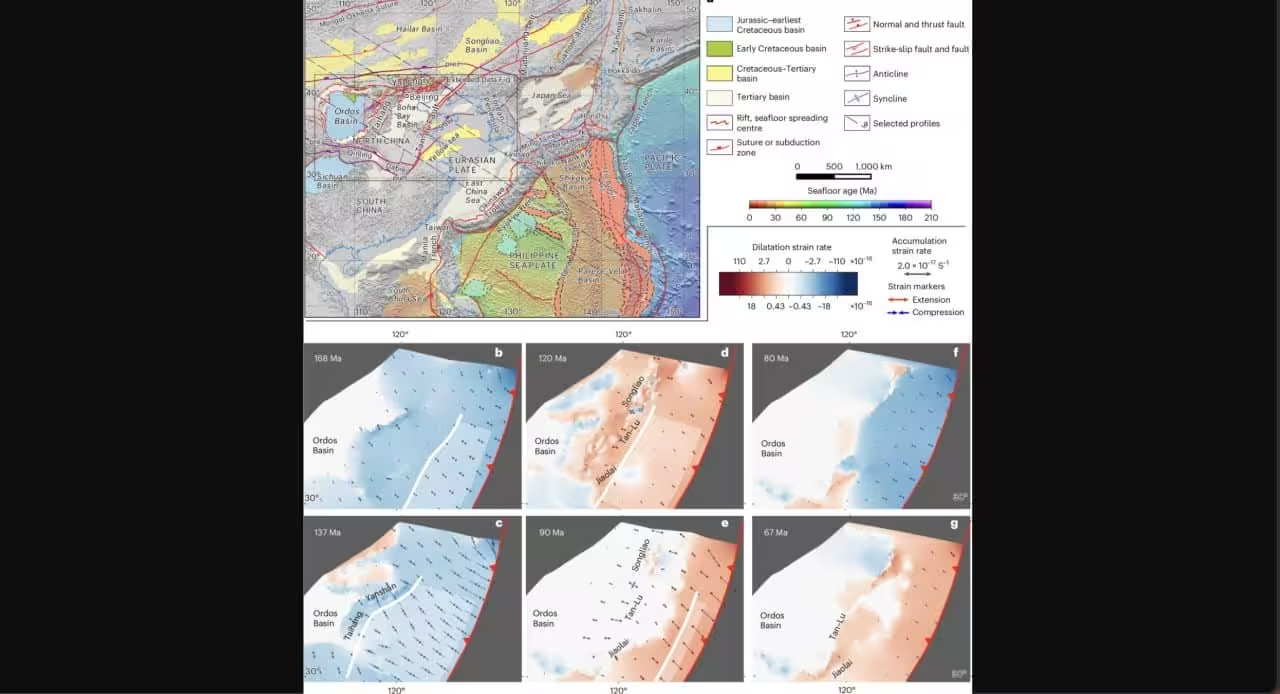The stable interior parts of the continental crust are called cratons. These are the cores of all modern continents. It was previously thought that nothing had happened to them for billions of years, but recently an international team of geologists discovered signs of destruction, deformation and thinning in the North China Craton.
Changes inside cratons are not recorded: volcanic and seismic activity, faulting or rock formation are not characteristic for them. What’s more, throughout Earth’s geological history, these powerful, deep blocks coalesced into supercontinents and drifted across the surface, remaining stable and cold.
But it turns out that one of the oldest foundations of the continental crust is prone to destruction. This was reported by an international research group in a paper published in the journal. Natural Geology After examining the signs of thinning of the lithosphere and significant deformation of the North China Craton since the beginning of the Mesozoic Era (i.e., within the last 200 million years).
The team led by Shaofeng Liu (Shaofeng LiuScientists from the China University of Geosciences analyzed data on the movement of the mantle and lithosphere using computer simulations and then combined them with a wide range of geological, geochemical and geophysical data. This allowed scientists to understand how processes deep within the Earth affect surface structures.
To visualize the results, the team created a video showing the dynamics and results of the model. The researchers also elucidated the mechanism by which subduction (subduction of one lithospheric plate beneath another) and subsequent retreat of the flat oceanic Izanaga plate could result in thinning and deformation of the craton.
The team divided the deformation process of the North China Craton into two main phases that occurred over tens of millions of years. The first resulted in Izanaga subducting beneath the Eurasian plate, but instead of advancing deeper into the mantle, it flattened and began moving parallel to the continental plate. This led to the shortening and thickening of the lithosphere and the subsequent formation of the Taihanshan mountain range in northeastern China.
Also read – A scientist recreated the face of a “vampire” girl from Poland
Izanagi then began to retreat (stage two), moving deeper in the opposite direction. This caused the lithosphere to stretch and subsequently thin by about 26 percent. The process also contributed to the heating and erosion of the base of the craton and was accompanied by magmatic activity.
Geologists have also reported several crustal stretching events that began about 136 million years ago but were interrupted by compression in the Late Cretaceous (about 93-80 million years ago). After this, stretching began again and continues to this day, contributing to the destruction of the craton.
Thus, both phases and subsequent processes led to significant changes in the topography of the region, and these changes were reflected in sedimentary basins and the formation of new geological structures. The rapid retreat of the Izanaga plate played a key role in the transformation of the North China Craton, with changes occurring at a depth of approximately 660 kilometers.
The team stated that the model they developed corresponds to the evolution of the surface and the modern structure of the lithospheric plates. The results also significantly expand scientists’ knowledge of the Earth’s dynamics and are of practical importance. The fact is that deformation of the lithosphere affects mineral formation and can help predict seismic activity.













